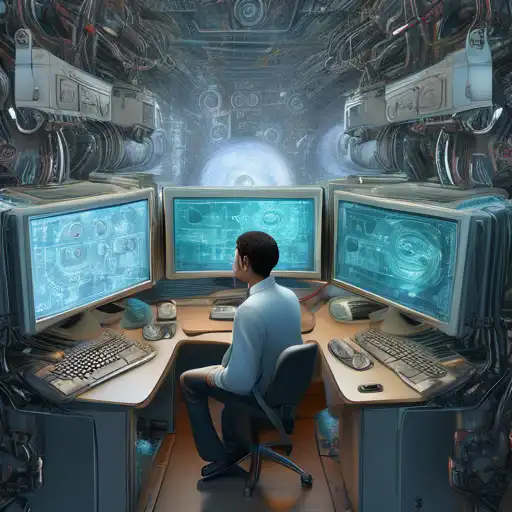Introduction to Computer Vision
Computer vision is a field of artificial intelligence that trains computers to interpret and understand the visual world. By leveraging digital images from cameras and videos and deep learning models, machines can accurately identify and classify objects — and then react to what they "see."
The Science Behind Computer Vision
At its core, computer vision involves the automatic extraction, analysis, and understanding of useful information from a single image or a sequence of images. It involves the development of a theoretical and algorithmic basis to achieve automatic visual understanding.
Key Technologies in Computer Vision
- Image Classification: Identifying what an image represents.
- Object Detection: Locating objects within an image.
- Object Tracking: Following an object's movement over time.
- Facial Recognition: Identifying or verifying a person from a digital image or a video frame.
Applications of Computer Vision
Computer vision technology is being used in a variety of industries, from healthcare to automotive. Here are some of the most impactful applications:
- Healthcare: From detecting tumors in radiology scans to monitoring patient movements, computer vision is revolutionizing patient care.
- Retail: Automated checkout systems and inventory management are just the beginning of how retail is being transformed.
- Automotive: Self-driving cars use computer vision to interpret their surroundings, making autonomous vehicles a reality.
- Security: Surveillance systems use computer vision to detect unusual activities or recognize faces in crowds.
Challenges in Computer Vision
Despite its advancements, computer vision faces several challenges, including the need for large datasets for training, the complexity of real-world environments, and the ethical considerations surrounding privacy and surveillance.
The Future of Computer Vision
The future of computer vision is incredibly promising, with ongoing research focused on improving accuracy, efficiency, and applicability. As technology advances, we can expect computer vision to become even more integrated into our daily lives, offering new ways to interact with the world around us.
For those interested in diving deeper into the world of artificial intelligence and machine learning, exploring machine learning basics can provide a solid foundation.
